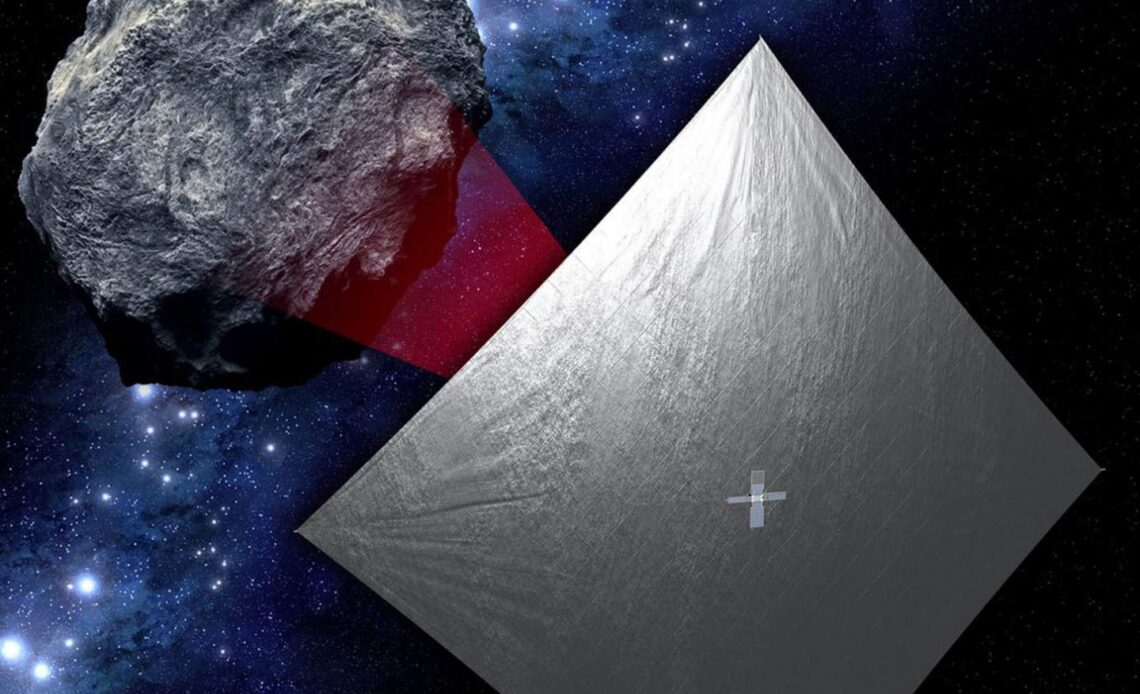
At the point when NASA dispatches its uncrewed Artemis I mission to the moon, it will have a little buddy curious to see what happens. Simultaneously as it conveys the Orion container (which will circle the moon), the Space Launch System rocket will likewise convey a little shoebox-sized smallsat called the Near-Earth Asteroid Scout (NEA Scout) which will visit a space rock. This especially little satellite is very strange.
What makes NEA Scout surprising is its strategy for impetus. The minuscule specialty will utilize a sun oriented sail to travel through the nearby planet group, denoting NASA’s first utilization of this innovation for a profound space mission.
Sunlight based sails sound like something out of sci-fi, yet they are without a doubt genuine – and they work. They comprise of extremely slim, exceptionally light sails which are profoundly intelligent. Photons of light from the sun hit the sails and drive the art forward.
The interaction associated with moving with sun oriented sails is significantly more slow to get everything rolling than different strategies for impetus, yet it is incredibly productive, and permits specialty to cruise out into space without expecting to convey fuel with them. Sunlight based sails have effectively been utilized by space apparatus practically speaking, all things considered, missions like LightSail 2!
The NEA Scout mission will send a sun powered sail the size of a racquetball court to visit a space rock called 2020 GE, a more modest space rock which is under 60 feet (18 meters) across. This space rock is named a close Earth space rock, meaning it will approach our planet, and the NEA Scout mission will be furnished with a camera to gather information on its size, shape, pivot, and surface properties.
It’s essential to dive deeper into average sized space rocks like 2020 GE as most space rock research has zeroed in on bigger space rocks.
“On account of the revelations of NEAs by Earth-based observatories, a few targets had been distinguished for NEA Scout, all inside the 16-to-100-foot [5-to-30-meter] size range,” said Julie Castillo-Rogez, the mission’s central science agent at NASA’s Jet Propulsion Laboratory in Southern California (through JPL). “2020 GE addresses a class of space rock that we presently know very little about.”
Concentrating on this size space rock can assist specialists with seeing more with regards to how to shield Earth from likely space rock impacts. “Albeit huge space rocks are of most worry from a planetary safeguard point of view, objects like 2020 GE are undeniably more normal and can represent a peril to our planet, in spite of their more modest size,” said Castillo-Rogez.
Just as examining the space rock, this mission will likewise show how sun powered sails could be utilized for future missions. One benefit of the mission’s more slow speed is that it will pass the space rock gradually, permitting analysts more opportunity to assemble information. Furthermore NASA has plans for more sun powered sail missions later on, including the Solar Cruiser mission which intends to begin an excursion toward the sun in 2025.
NEA Scout will be sent off alongside the Artemis I mission, presently expected to send off not long from now.
